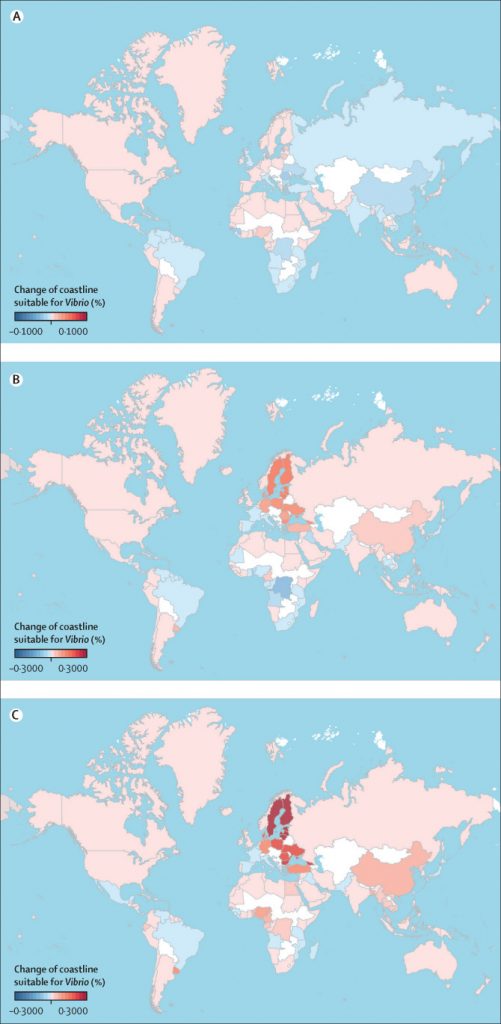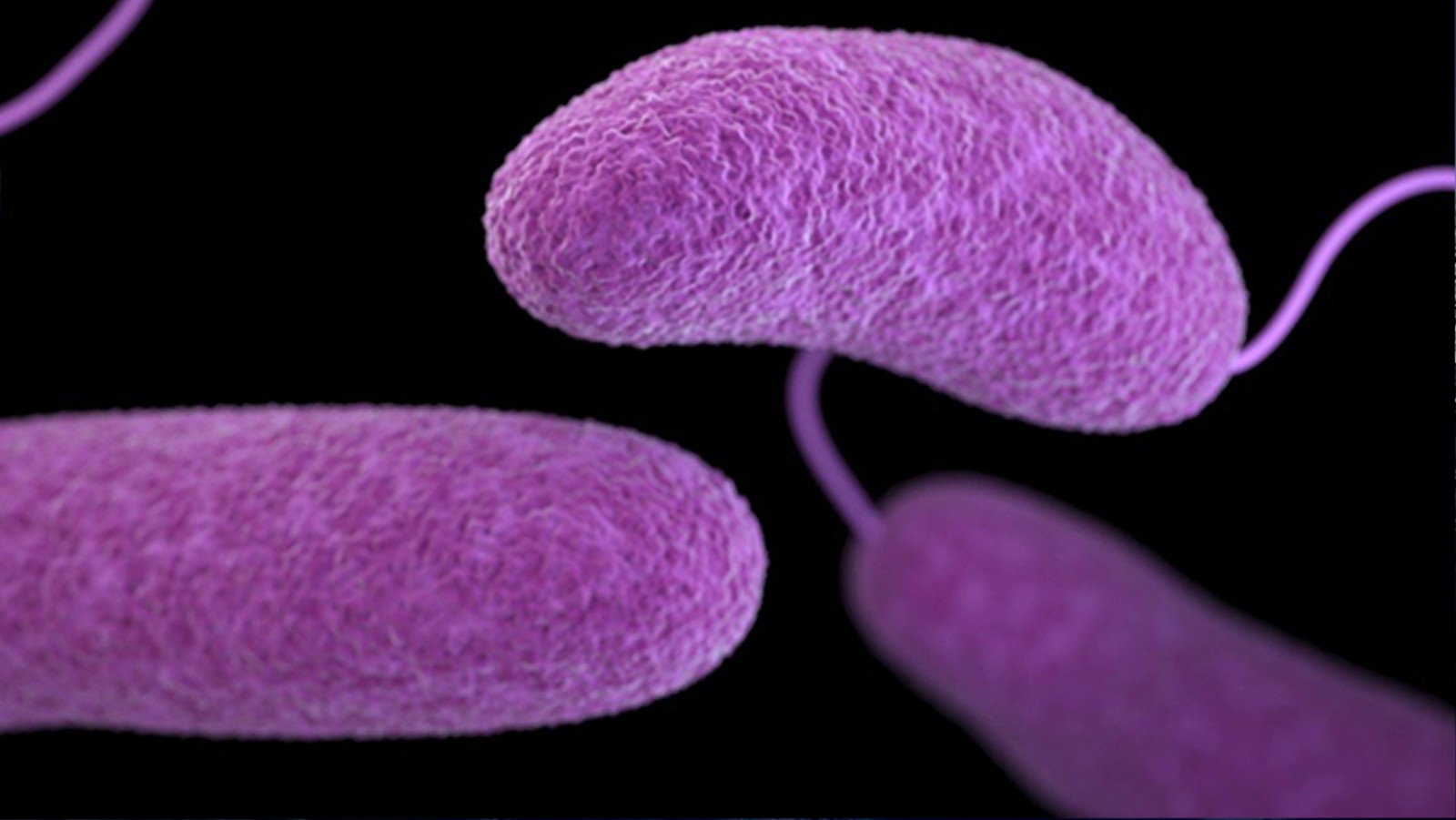In a recent study published in Lancet Planetary Health, Joaquin Trinanes, a scientist at NOAA’s Atlantic Oceanographic Meteorological Laboratory (AOML), uses a new generation of climate, population, and socioeconomic projections to map future scenarios of distribution and season suitability for the pathogenic bacteria, Vibrio. For the first time, a global estimate of the population at risk of vibriosis for different time periods is provided.
Vibrio is a genus of bacteria that has a strong affinity for freshwater and marine environments. These bacteria are known for causing foodborne illnesses through the consumption of undercooked seafood and wound infections from exposure to contaminated water.
Infections caused by Vibrio species have undergone a non-uniform global expansion over the past few decades, reaching new areas of the world where environmental conditions were previously considered unfavorable for these organisms. In fact, some areas have shown a rapid increase in infections.
This study integrates climate, population, and socioeconomic projections to provide more accurate estimates of Vibrio infection risk using models. Under the most unfavorable scenario, results of the study show that coastal areas suitable for Vibrio could cover 38,000 km of new coastal areas by 2100. The length of the season is also expected to expand, such that disease conditions will be favorable in more places for longer periods of time, with an expansion rate of around 1 month every 30 years.

“We combined new climate modeling forecasts along demographic and socioeconomic parameters to improve our knowledge of future Vibrio illness at global scale. Future work will take into account additional factors such as sea level change and exposure to improve the results. Having accurate epidemiological data is also essential for these types of studies,” said Joaquin Trinanes, a scientist at AOML, and lead author of the study.
The abundance of Vibrio in the water is controlled by temperature and salinity. Warmer waters allow more bacteria to grow while lower salinity expands the area where Vibrio can thrive. Impacts from climate change, such as increases in sea surface temperatures, are altering infection patterns for some diseases that are particularly sensitive to ecological changes. The expansion of Vibrio matches what we’ve seen with similar diseases caused by bacteria in the water.
The study found that the human population at risk of Vibrio illness almost doubled from 1980 to 2020 (from 610 million to 1100 million). However, according to these projections, the growth trend will be weakened in the upcoming decades and will stabilize around 1300 million after 2050. This is due to a projected stabilization of the world population in regions with Vibrio risk.
Results of this study can be used to develop a new generation of early warning systems to identify and forecast areas and periods of risk for Vibrio illness. This will help public health policy makers to create more robust intervention plans and anticipate responses to future scenarios of Vibrio risk.
